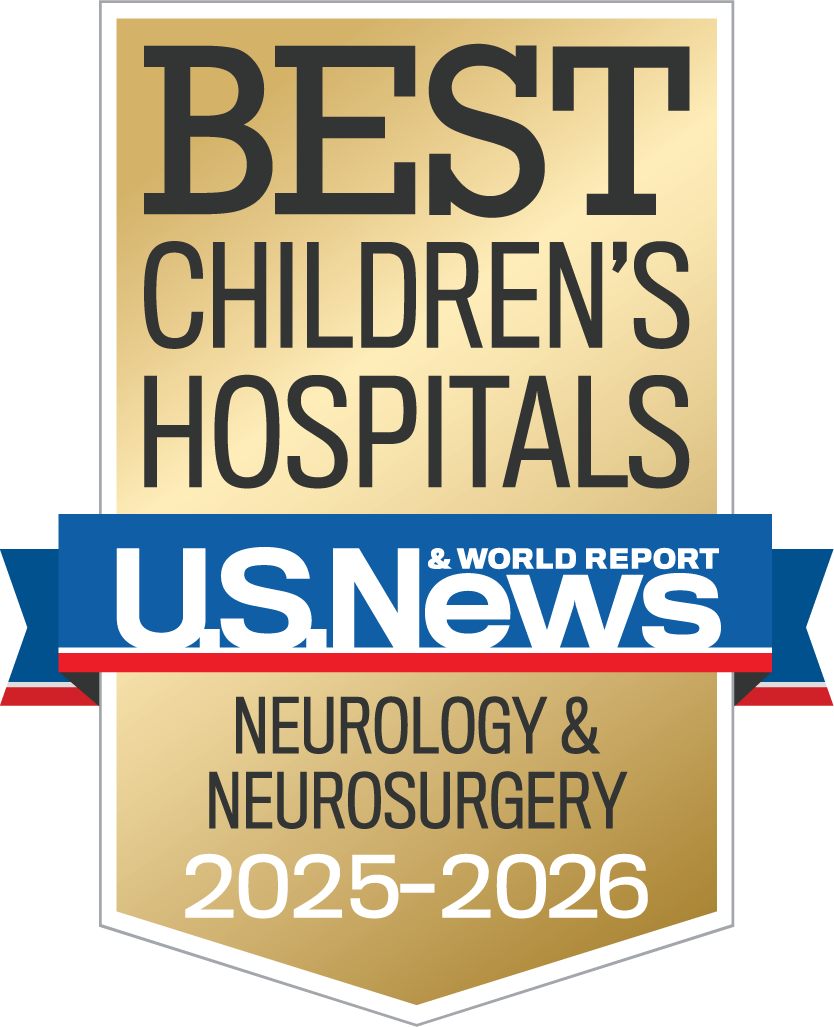Minimally invasive endoscopic strip craniectomy offers a strong alternative for infants with craniosynostosis, according to a growing body of research in pediatric neurosurgery.
“The data has been clear that this is a very effective surgery with excellent results, and it’s less invasive than the traditional open approaches for treating craniosynostosis,” says Dr. Suresh Magge, medical director of neurosurgery at CHOC and co-medical director of the CHOC Neuroscience Institute. “A lot of the research that we and other groups have done shows that results are either as good or can even be better in certain aspects of facial growth compared to open vault reconstruction.”

Dr. Magge’s research on the topic has included:
- Quantitative outcomes of endoscopic strip craniectomy for metopic craniosynostosis in children with severe trigonocephaly
- Endoscopic strip craniectomy yields better results than Pi craniectomy for treatment of sagittal craniosynostosis
Traditional surgery for craniosynostosis is an open cranial vault reconstruction, in which a surgical team takes apart the skull in order to reshape the skull plates. If craniosynostosis is diagnosed early enough – preferably before four months of age – minimally invasive endoscopic surgery can correct this condition. Small incisions are made and, using a camera, the fused portions of the skull are removed.
While both the traditional cranial vault reconstruction and the minimally invasive surgery can offer excellent surgical results, the minimally invasive approach generally involves less blood loss and swelling, smaller incisions, reduced need for blood transfusions, less time under anesthesia and shorter hospital stays. Pediatric patients usually go home the day after surgery. Once surgery is completed, the patient is fitted for a cranial molding helmet he or she must wear for a few months that helps guide the skull correction over time.
“We have an outstanding craniofacial team, including neurosurgeons, plastic surgeons and maxillofacial surgeons, here at CHOC, and we strive to offer an individualized approach to each patient,” Dr. Magge says. “Physicians need to know that craniosynostosis requires an early diagnosis so that parents have the option of the minimally invasive surgery. At the same time, we want to give parents different options when it comes to surgery.”
Dr. Magge recently joined CHOC after an 11-year tenure as a pediatric neurosurgeon at Children’s National Hospital in Washington, D.C., where he started the medical center’s minimally invasive craniosynostosis program and was the director of neurosurgery fellowship training. He completed his neurosurgery residency training at the University of Pennsylvania and his pediatric neurosurgery fellowship training at Boston Children’s Hospital.
While Dr. Magge has a wide-ranging clinical practice, his special clinical and research interests include craniosynostosis, brain and spinal tumors, especially diffuse intrinsic pontine gliomas, and pediatric neurovascular disease, including arteriovenous malformation and Moyamoya disease. In his new role at CHOC, Dr. Magge looks forward to contributing to the growth of CHOC’s neurosurgical programs, including the brain tumor program, neurovascular program, epilepsy program, robotic surgeries and more.
“It’s such an exciting time here at CHOC, from how we’re building and growing our programs to driving clinical innovation, as well as training the next generation of pediatric neurosurgeons through our affiliation with the University of California, Irvine,” Dr. Magge says. “We’re always asking ourselves, ‘What’s the best thing we can do for each child in the least invasive manner with the least amount of pain?’ and then doing so in a compassionate manner.”

CHOC Hospital was named one of the nation’s best children’s hospitals by U.S. News & World Report in its 2025-26 Best Children’s Hospitals rankings and ranked in the neurology/neurosurgery specialty.




